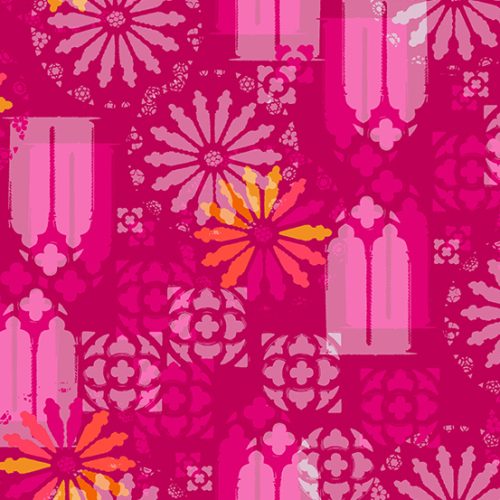How to Select Fabrics for a Blended Quilt
Blended quilts are a beautiful fusion of colours and patterns, creating a soft, harmonious effect where no single fabric stands out too sharply. They exude an elegant, painterly quality, much like a watercolour painting. Achieving this effect requires thoughtful fabric selection, ensuring each piece seamlessly merges into the next. Here’s how to curate fabrics for a stunning blended quilt.
Start with a Colour Palette
A well-chosen colour palette sets the tone for a blended quilt. Opt for a range of shades within the same colour family or complementary hues that transition smoothly. Soft pastels, muted tones, and earthy hues often work best. A helpful approach is to select a focus fabric with multiple colours and use it as a guide to choosing coordinating fabrics.
Choose Fabrics with Medium to Low Contrast
Blended quilts rely on subtle transitions rather than stark contrasts. Avoid fabrics with strong, high-contrast prints that stand out too much. Instead, opt for medium-to-low contrast designs, such as tone-on-tone prints, florals, or soft geometric patterns. Batiks, watercolour prints, and small-scale motifs help achieve the seamless blending effect.
Incorporate Texture and Depth
Varied fabric textures can enhance the quilt’s visual depth. Look for a mix of prints, such as florals, abstract designs, and subtle geometrics, ensuring they share similar tonal values. Layering different textures keeps the quilt from looking flat while maintaining cohesion.
Pay Attention to Scale
Print scale plays a crucial role in fabric selection. Avoid using fabrics with large, bold prints that dominate the composition. Instead, opt for small to medium prints that allow for smooth transitions between fabrics. If using a larger print, balance it with subtle patterns that echo its colours.
Test Your Fabric Selection
Lay out your fabric choices together and step back to observe how they interact. If a particular fabric draws too much attention, consider replacing it with a more subdued option. A great way to test fabric blending is by taking a black-and-white photo—if the values flow evenly, your selection is on the right track.
Use a Gradual Transition Approach
When arranging fabrics in your quilt, think about how each piece flows into the next. Arrange fabrics so that darker tones gradually fade into lighter ones, ensuring smooth transitions. Blended quilts often follow an ombré-like effect, where colours gently shift across the quilt.
7. Trust Your Eye and Experiment
While guidelines help, quilting is an art form that thrives on creativity. Trust your instincts and experiment with different combinations. Sometimes, unexpected pairings create the most beautiful results.
Creating a blended quilt is both an art and a skill, requiring patience and an eye for subtle details. By carefully selecting fabrics that complement rather than compete, you can craft a quilt with a beautifully harmonious, timeless aesthetic. Happy quilting!



